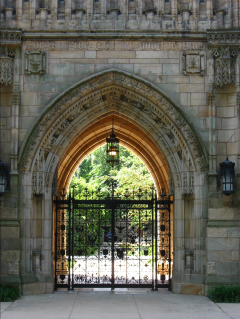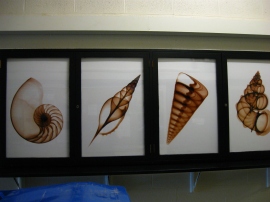 This past fall I graduated from Yale university with a PhD in physical chemistry. To apply my skills to more biological systems, I am now working as a post-doc studying proteins. In many ways, this feels like starting over. The techniques, systems of interest, and preparation and analysis methods are very different. However, insights from my previous research form a common thread with the underlying principals that I am now studying, giving me a unique perspective. That said, many of the things I learned in graduate school were related to psychology and management rather than chemistry, but were necessary to get anything done. I list a few of them here as much for myself as for anyone else.
This past fall I graduated from Yale university with a PhD in physical chemistry. To apply my skills to more biological systems, I am now working as a post-doc studying proteins. In many ways, this feels like starting over. The techniques, systems of interest, and preparation and analysis methods are very different. However, insights from my previous research form a common thread with the underlying principals that I am now studying, giving me a unique perspective. That said, many of the things I learned in graduate school were related to psychology and management rather than chemistry, but were necessary to get anything done. I list a few of them here as much for myself as for anyone else.
Personal Interactions Are Very Important
Part of the reason I came into science (aside from all the beautiful math) was that I wanted to avoid interpersonal politics. I felt politics always resulted in manipulation. As time passed, however, I came to the conclusion that politics are inherent to humanity. I initially also avoided psychology for the same reason I avoided politics. However, with more exposure, I realized that it was simply the study of human motivations and that its principles could be used to diffuse situations as well as to weaponize them.
Most Conflicts Arise from Self-interest
One things which helped me improve my public speaking skills (aside from practice, learning power point better, and practicing telling stories) was the realization that the audience wants to hear a good talk. About three quarters of the time I’ve witnessed people asking combative questions at talks, their professional reputations seemed to be threatened in some way by the results of the study. This will also occur if a study is so fundamentally flawed that the appearance of agreement would be embarrassing to the scientist. This principle also applies to coworkers. When someone is brusque, dominates limited supplies, or withholds information, the root cause is often that they feel their productivity or position is threatened.
Knowledge is Power
In these cases, communication breaks down because knowledge is power. If your opponent does not know your plans, it is harder for them to mount opposition. Of course, if your opponent has no idea why their co-worker is refusing to forward emails or tell them about meetings, it is hard for them to get out of the way. One of the best ways I’ve found to diffuse tense relationships is to find some way to be helpful. While direct confrontation is often perceived as an attack, offering to help edit a report or to do a menial task for someone implicitly communicates that you are not a threat, and may lead to reciprocal cooperation and communication.
The Scientific Community Is Small

An obvious rebuttal to the strategy I’ve outlined above is that sometimes co-workers are being malicious and that it is cowardly to allow the actions of others to change the way you approach research. On a certain level this is true. However, the scientific community is by necessity small, and those who do not compromise will have conflicts with the same people over and over. This is true no matter what the field. Specific areas with a lot of extant studies are harder to fund, driving migration or very deep specialization. As a result, clusters of professors tend to review each others’ papers and grant proposals so frequently that it literally does not pay to make enemies.
Be Brave
When one first comes to graduate school, it’s hard to know where to start. Often it seems that the most confident members of a team have a special advantage. This is true: not only does self-confidence lead to risk-taking and the associated rewards, but others take behavioral cues from confidence levels. Fortunately, the contrapositive of the second point is also true: Unless one threatens someone’s interests, one should not provoke much opposition. Pick something to study. Even someone who cannot do anything in the lab at first can become the local expert in the literature (knowledge is power) and improve their relationships in the lab by sharing that knowledge freely (the scientific community is small). Progress doesn’t come without a little risk, but if you’re enjoyable to work with, other people will be on your side(personal interactions are very important).
Do not repay anyone evil for evil. Be careful to do what is right in the eyes of everyone. If it is possible, as far as it depends on you, live at peace with everyone. —Romans 12:17-18









 and maybe even predict our percent yield? (We speak of chemistry here.) In other words, the conventional view of science is that it can quantify everything–and if it cannot, well, then at least it can quantify the exceptions. That is a problem. Science is not exact.
and maybe even predict our percent yield? (We speak of chemistry here.) In other words, the conventional view of science is that it can quantify everything–and if it cannot, well, then at least it can quantify the exceptions. That is a problem. Science is not exact.